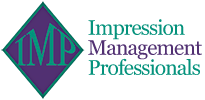Almost 90% of all people we poll say a presentation is about sharing information. The reality is that a presentation is never about just sharing information!
If you believe the presentation is about sharing information you have a tendency to just dump data and information on people and assume they will be able to decipher it and take action. This is why so many presentations and with people saying, “Great information I’ll get back to you on it.”
What they are literally telling you is, “I am not sure how to process, digest, absorb, and react to this information.” In other words, I have no clue what you expect me to do with this information.
Studies have showed that over 85% of what people learn in a presentation is forgotten within three days. People are never looking for information. What they are looking for is the context so they can relate the information to what they need to do and take action.
The vast majority of people think that presentation training is about to helping them with their theatrics and comfort level speaking in front of a group. In order to be a credible candidate communicator you need to be able to think in a way that is transformational so you listen and speak to your audience at a whole different level. You need to leave knowing the action you need them to take will happen, not that you hope it will happen.
You want to be a transformational communicator rather than transactional. Moving people to action with the way you engage and connect with them at all times. Saying the right thing at the right time every time. Understanding how people see you, how they hear you, how you say your message and how you deliver your message in a way that is congruent, cohesive and authentic.
There are four steps that are critical to a presentation:
1. KNOW YOUR AUDIENCE
This step is one of the most important in the building of your presentation and one that is usually missed by presenters. This step lets you begin to put yourself in your audience’s shoes.
2. PRESENT FROM THEIR PERSPECTIVE
What is the GOAL of your presentation/discussion?
What are the 3-5 QUESTIONS that, if you answer, will help the audience reach the goal you have set? Remember these are not the questions the other person will ask you but they are what the audience/other person needs to know in order to move to action and achieve the goal you set.
What order will the audience need to hear them?
3. READ YOUR AUDIENCE
It is crucial that “in the moment” you are able to adapt to your audience. There is nothing worse than sitting through a presentation that feels canned or that makes you feel as though it is being “pushed” on you. In order to avoid that you will need to be able to keep you presentation tight, your visuals simple, and your brain totally on the customer.
4. OWN YOUR VISUAL IMAGE
Within 60 seconds of you entering the room your customer is making 11 key impressions about you, which are then transferred to how they view your company and your product. It is absolutely vital that you make sure you pay attention to how you are perceived and how you want to be perceived.
Communication is about getting the response needed. This means that as the presenter you need to understand your audience, craft your message, and then deliver it in the compelling fashion that your audience needs so that you have consistency at ALL TIMES.
Remember it is NEVER to just share information. You are always looking for some kind of action or behavior based on what you present. To say you are presenting to share information is passive and transfers the power of interpretation to the listener.
